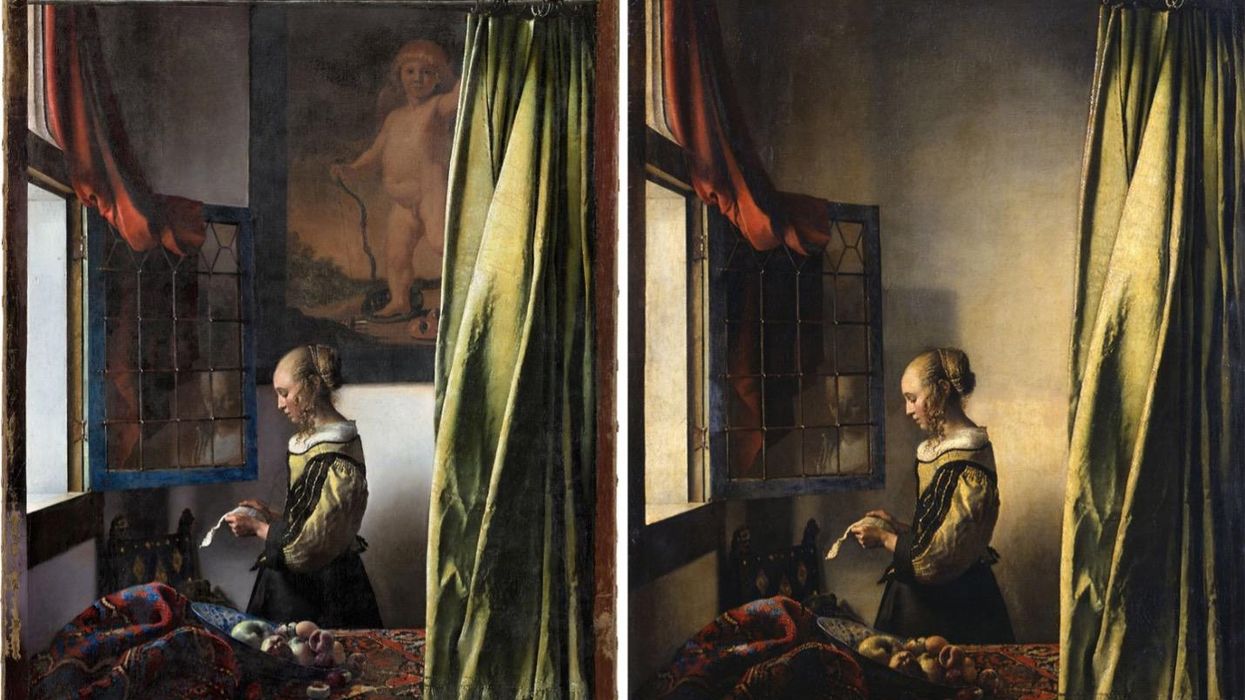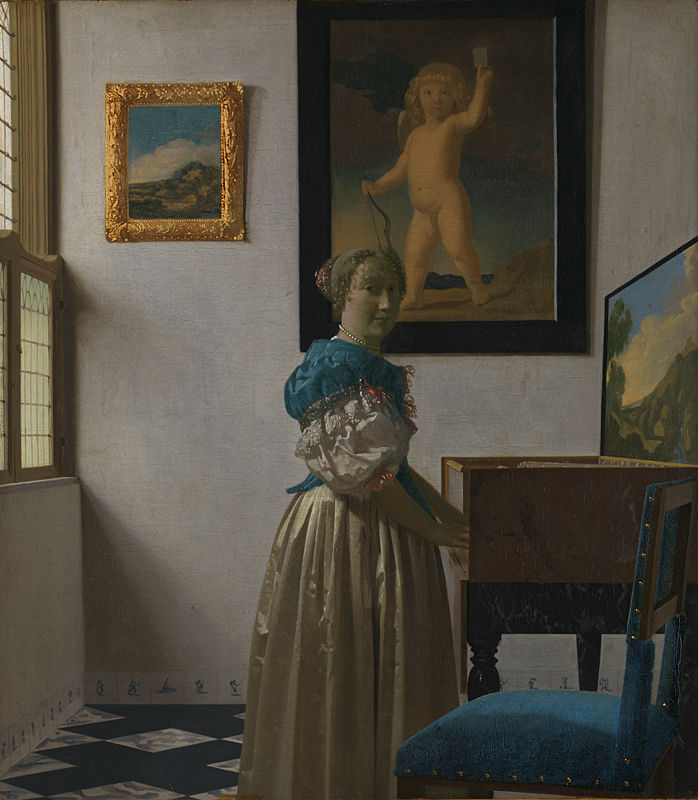
Botched art restorations make good headlines, but rarely are we asked to consider if a posthumous change to a great master’s work represents an improvement. And yet, when images of a restored Girl Reading a Letter at an Open Window by Jan Vermeer circulated recently, the world had the chance to compare the restored original painting, at the left, with an unknown painter’s revision, long thought to be Vermeer’s work. (Click here to view the paintings side by side in a larger format.) Several people announced that they preferred the doctored painting on the right, first attributed to Vermeer in 1880 (and previously attributed to Dutch masters Rembrandt and Hals).
As conservators found at the conclusion of a restoration project begun in 2017, it is the painting on the left that Vermeer intended as his final statement on the subject of a girl reading a letter at an open window. That painting puts the subject in a very different light. The naked Cupid behind the young woman — in place of an ambiguously dour patch of beige — revises over a century of art historical interpretation. “With the recovery of Cupid in the background, the actual intention of the Delft painter becomes recognizable,” says Stephan Koja, director of the Old Masters Picture Gallery.
Art historians and conservators had long known the other painting was underneath, having discovered it via X-ray in 1979. But they assumed it was Vermeer himself who made the change. “As it was not uncommon for artists to paint over their work,” My Modern Met writes, “scholars initially accepted that Vermeer had simply changed his mind and decided to keep the wall bare.” Instead, thanks to the 2017 restoration project, “researchers were able to conclude that the overpainting was completed over several decades after the canvas was finished.”

“Vermeer often incorporated empty backgrounds in his genre paintings,” a feature that has become something of a hallmark thanks to the fame of paintings like The Milkmaid. This is one reason the Cupid went undercover for so long, despite an unbalanced composition without it. But Vermeer also incorporated backgrounds filled with art, including the same Cupid painting, which appears in his lesser known A Young Woman Standing at a Virginal and may have been a painting he himself owned. “There has been much speculation,” the National Gallery notes, that this painting (and another, similarly titled work) represent “fidelity” and “a venal, mercenary approach to love.” What approach might be suggested by the newly restored Girl Reading a Letter at an Open Window?
via Colossal
Related Content:
A 10 Billion Pixel Scan of Vermeer’s Masterpiece Girl with a Pearl Earring: Explore It Online
Josh Jones is a writer and musician based in Durham, NC. Follow him at @jdmagness
A Restored Vermeer Painting Reveals a Portrait of a Cupid Hidden for Over 350 Years is a post from: Open Culture. Follow us on Facebook and Twitter, or get our Daily Email. And don't miss our big collections of Free Online Courses, Free Online Movies, Free eBooks, Free Audio Books, Free Foreign Language Lessons, and MOOCs.
from Open Culture https://ift.tt/3l7U5IT
via Ilumina
Comments
Post a Comment